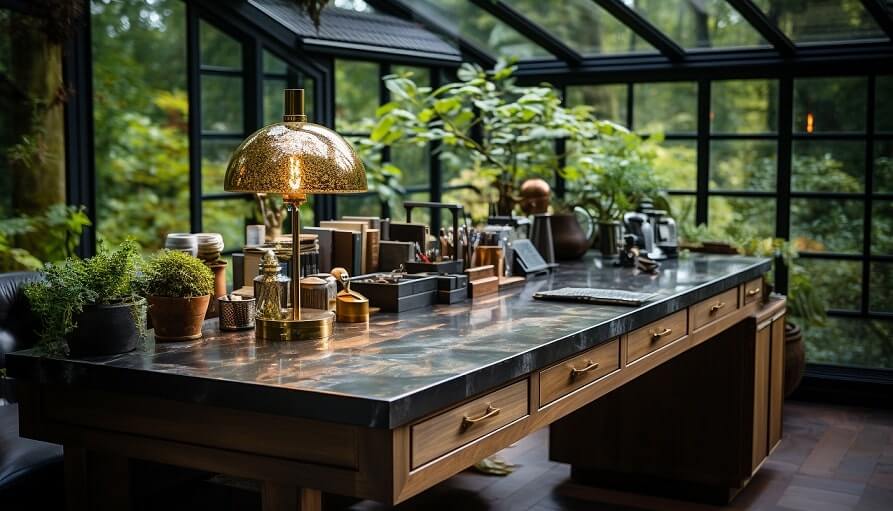
Sustainable Living Made Easy: Eco-Friendly Practices for Vertical Gardening Ideas
Are you looking to make a positive impact on the environment while also enhancing your living space? Vertical gardening offers a sustainable solution that is not only eco-friendly but also incredibly stylish. In this blog post, Vertical Gardening Ideas we will explore how you can easily incorporate vertical gardening into your daily life and reap the benefits of a greener, more sustainable lifestyle. Whether you’re an experienced gardener or just starting out, these tips and tricks will help you create a thriving green oasis in any space. Let’s dive in and discover how sustainable living can be made easy with vertical gardening!
Introduction to Sustainable Living and Vertical Gardening Ideas
Are you ready to take your gardening skills to new heights? Vertical gardening is the perfect way to embrace sustainable living while adding a touch of greenery and style to your space. Whether you have a small patio, balcony, or even just a sunny wall indoors, vertical gardening offers endless possibilities for growing plants in an eco-friendly and creative way. Join us as we explore the world of vertical gardening and discover how easy it is to bring nature upwards with our vertical gardening ideas!
Benefits of Vertical Gardening
Vertical gardening offers numerous benefits beyond just adding a touch of green to your living space. One of the key advantages is maximizing limited space – whether you live in an apartment or have a small backyard, vertical gardens allow you to grow plants upwards, saving valuable floor space.
Another perk is improved air quality; plants naturally filter pollutants and release oxygen, creating a healthier environment for you and your family. Vertical gardens also help with insulation – during hot summers they can reduce indoor temperatures and provide shade, while in colder months they act as natural barriers against cold winds.
Furthermore, these gardens promote biodiversity by attracting birds, bees, and beneficial insects that contribute to pollination. They also enhance mental well-being by creating a calming atmosphere and reducing stress levels through their beauty and soothing effect on the senses.
Choosing the Right Structure for Your Vertical Garden
When it comes to choosing the right structure for your vertical garden, there are several options to consider. The first step is to assess the space you have available – whether it’s a small balcony or a large backyard, there are structures that can accommodate any size area.
One popular choice is a trellis system, which provides support for climbing plants like tomatoes and cucumbers. Another option is a wall-mounted planter, ideal for herbs and smaller plants. If space is limited, hanging baskets or pocket planters can be a great solution.
Consider the material of the structure as well – wood blends well with outdoor spaces while metal offers a more modern look. Make sure the structure is sturdy enough to withstand the weight of soil and plants once fully planted.
Ultimately, choose a structure that complements your style and meets the needs of your vertical garden vision.
Materials and Tools Needed
When it comes to setting up your vertical garden, having the right materials and tools on hand is essential for success. Here’s a list of what you’ll need to get started:
Firstly, consider the structure of your vertical garden – whether it’s a freestanding frame, mounted on a wall, or hanging from a ceiling. This will determine the type and amount of materials required.
Next, gather basic gardening tools like gloves, pruners, a watering can or hose for maintenance tasks. You may also need screws, brackets, and hooks depending on your chosen design.
For planting purposes, stock up on potting soil suitable for containers as well as fertilizer to nourish your plants. Don’t forget about selecting the right pots or planters that fit securely in your chosen structure.
Lastly, having a level for proper installation and some creative touches like labels or decorative elements can add personality to your vertical garden setup.
Preparing Your Space for a Vertical Garden
When it comes to preparing your space for a vertical garden, there are a few key factors to consider. Firstly, assess the amount of sunlight your chosen location receives throughout the day. Most plants thrive in at least 6-8 hours of sunlight, so select a spot that meets this requirement.
Next, ensure you have easy access to water for irrigation. Whether you opt for traditional watering cans or automated systems, having a convenient water source nearby will make maintenance much simpler.
Clearing out any debris or clutter from the area is essential before setting up your vertical garden. This allows for better airflow and prevents pests from taking up residence in your plants.
Lastly, think about how you want to showcase your vertical garden – whether it’s against a wall, on a balcony railing, or freestanding in your yard. Consider using hooks or brackets to securely mount your structure and maximize growing space while adding visual appeal to your outdoor oasis.
Selecting Plants for Your Vertical Garden
When it comes to selecting plants for your vertical garden, there are a few key factors to consider. First and foremost, think about the amount of sunlight your space receives. This will help determine which plants will thrive in your vertical garden.
Consider the size of your containers or pockets in the vertical structure when choosing plants. You want to make sure that each plant has enough room to grow and spread its roots comfortably.
Another important factor is water requirements. Some plants may need more frequent watering than others, so be mindful of this when making your selections.
Think about the overall aesthetic you want for your vertical garden. Do you prefer lush greenery or colorful blooms? Choose plants that align with your vision and create a harmonious display.
Don’t forget to research each plant’s care instructions to ensure they are compatible with the conditions in your vertical garden. With careful consideration, you can curate a beautiful and thriving selection of plants for your sustainable living oasis!
Maintenance Tips for a Successful Vertical Garden
Maintaining a successful vertical garden is essential to ensure your plants thrive and your space remains visually appealing. Regular watering is key – since vertical gardens tend to dry out faster, make sure to check the moisture levels frequently. Consider installing an automated irrigation system for convenience.
Keep an eye out for pests and diseases by inspecting your plants regularly. Prune any damaged leaves or stems to promote healthy growth and prevent issues from spreading. Rotate your plant placement occasionally to ensure each one receives adequate sunlight.
Fertilize your vertical garden as needed, following specific guidelines for each type of plant. Use organic fertilizers to maintain sustainability in your gardening practices. Lastly, don’t forget about cleaning! Remove any debris or dead leaves that may accumulate over time.
By staying on top of maintenance tasks, you’ll create a thriving vertical garden that brings beauty and greenery into your living space effortlessly.
Creative Ideas for Repurposing Materials in Your Vertical Garden
Looking to add a touch of creativity to your vertical garden? Consider repurposing materials for a unique and eco-friendly twist. Old wooden pallets can be transformed into vibrant planters by adding shelves or pockets for plants. Wine bottles cut in half make charming containers for small herbs or succulents, adding a pop of color to your garden.
Don’t throw away those old rain gutters – they can be mounted vertically to create cascading herb gardens. Mason jars are versatile containers that can be hung on walls, filled with soil, and used to grow various plants like strawberries or ferns. Upcycled shoe organizers can also double as vertical planters, offering multiple pockets for different herbs or flowers.
Get creative with items like old ladders, wire mesh baskets, or even metal cans. With a little imagination and resourcefulness, you can turn everyday objects into one-of-a-kind vertical garden masterpieces that not only look stunning but also promote sustainability in your gardening practices.
Frequently Asked Questions about Vertical Gardening
Curious about vertical gardening? Here are some common questions answered:
Wondering if you need a lot of space for a vertical garden? Not necessarily! Vertical gardens are perfect for small spaces, balconies, or even indoor areas.
Concerned about maintenance? Fear not – vertical gardens can be low-maintenance with the right plant choices and watering schedule.
Thinking about which plants to choose? Herbs like basil, mint, or thyme thrive in vertical gardens. Succulents and ferns also make great options.
Unsure about how to water your vertical garden? A drip irrigation system or self-watering planters can make watering hassle-free.
Worried about sunlight requirements? Most plants suitable for vertical gardening do well in indirect light, making them versatile for different environments.
Contemplating the benefits of composting in your garden? Composting can enrich the soil used in your vertical garden and promote healthier plant growth.
Conclusion: Embracing Sustainable Living through Vertical Gardening
Vertical gardening is more than just a trendy way to decorate your space – it’s a sustainable lifestyle choice that benefits both you and the environment. By incorporating eco-friendly practices into your vertical garden, you can reduce waste, conserve water, and promote biodiversity right from your own home.
Embracing sustainable living through vertical gardening allows you to connect with nature in a unique way while also contributing to the health of our planet. So gather your materials, select your plants, and get creative with repurposing items for your vertical garden. With some maintenance and care, you’ll soon be enjoying the beauty of a flourishing green oasis that not only enhances your surroundings but also makes a positive impact on the world around you.
Start small or dream big – whatever size or shape your vertical garden takes, remember that every plant counts towards creating a greener future. Let’s continue to cultivate our love for gardening while nurturing our commitment to sustainability through the innovative practice of vertical gardening.


